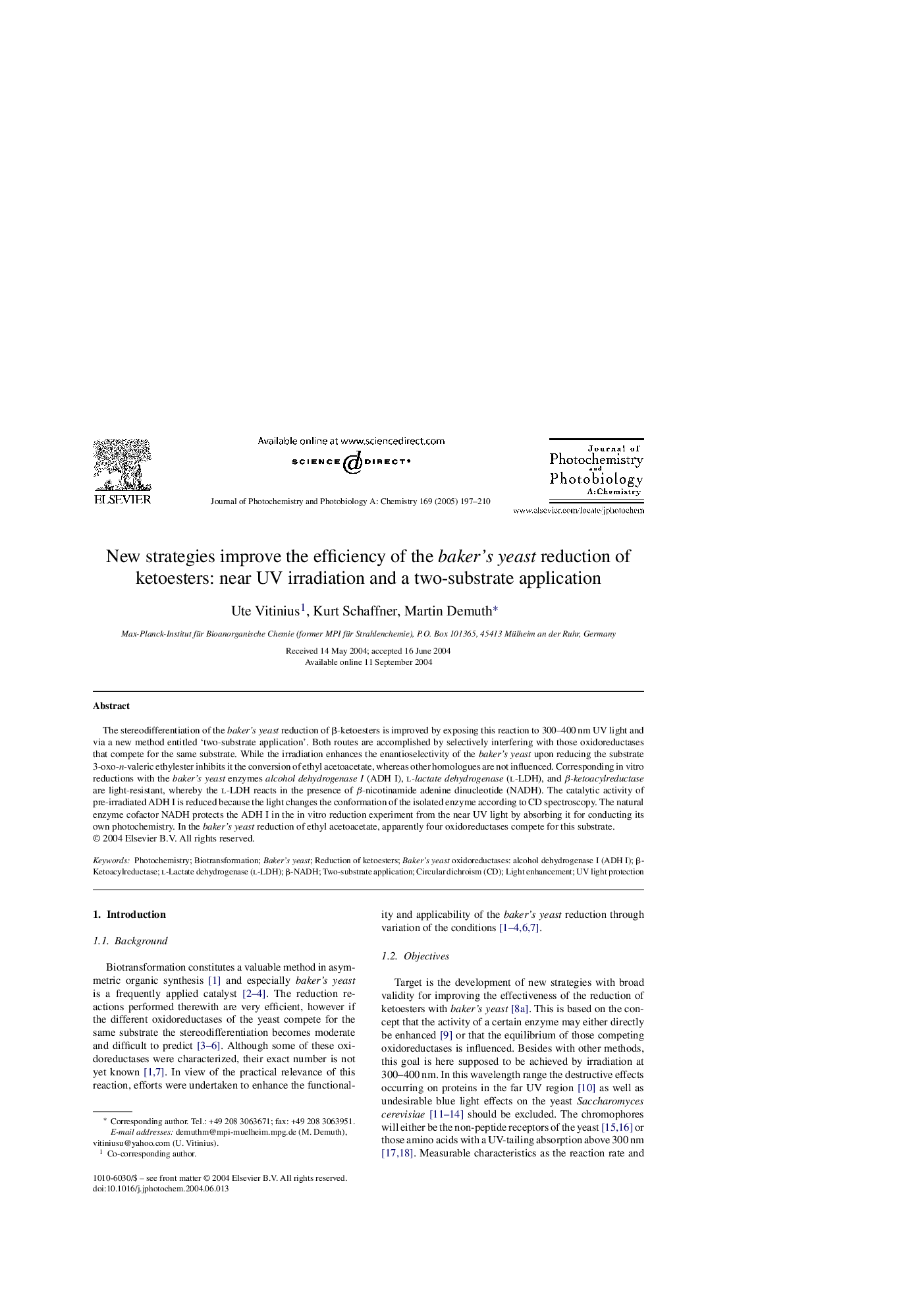| کد مقاله | کد نشریه | سال انتشار | مقاله انگلیسی | نسخه تمام متن |
|---|---|---|---|---|
| 9605769 | 44156 | 2005 | 14 صفحه PDF | دانلود رایگان |
عنوان انگلیسی مقاله ISI
New strategies improve the efficiency of the baker's yeast reduction of ketoesters: near UV irradiation and a two-substrate application
دانلود مقاله + سفارش ترجمه
دانلود مقاله ISI انگلیسی
رایگان برای ایرانیان
کلمات کلیدی
موضوعات مرتبط
مهندسی و علوم پایه
مهندسی شیمی
بیو مهندسی (مهندسی زیستی)
پیش نمایش صفحه اول مقاله

چکیده انگلیسی
The stereodifferentiation of the baker's yeast reduction of β-ketoesters is improved by exposing this reaction to 300-400 nm UV light and via a new method entitled 'two-substrate application'. Both routes are accomplished by selectively interfering with those oxidoreductases that compete for the same substrate. While the irradiation enhances the enantioselectivity of the baker's yeast upon reducing the substrate 3-oxo-n-valeric ethylester inhibits it the conversion of ethyl acetoacetate, whereas other homologues are not influenced. Corresponding in vitro reductions with the baker's yeast enzymes alcohol dehydrogenase I (ADH I), l-lactate dehydrogenase (l-LDH), and β-ketoacylreductase are light-resistant, whereby the l-LDH reacts in the presence of β-nicotinamide adenine dinucleotide (NADH). The catalytic activity of pre-irradiated ADH I is reduced because the light changes the conformation of the isolated enzyme according to CD spectroscopy. The natural enzyme cofactor NADH protects the ADH I in the in vitro reduction experiment from the near UV light by absorbing it for conducting its own photochemistry. In the baker's yeast reduction of ethyl acetoacetate, apparently four oxidoreductases compete for this substrate.
ناشر
Database: Elsevier - ScienceDirect (ساینس دایرکت)
Journal: Journal of Photochemistry and Photobiology A: Chemistry - Volume 169, Issue 2, 15 January 2005, Pages 197-210
Journal: Journal of Photochemistry and Photobiology A: Chemistry - Volume 169, Issue 2, 15 January 2005, Pages 197-210
نویسندگان
Ute Vitinius, Kurt Schaffner, Martin Demuth,